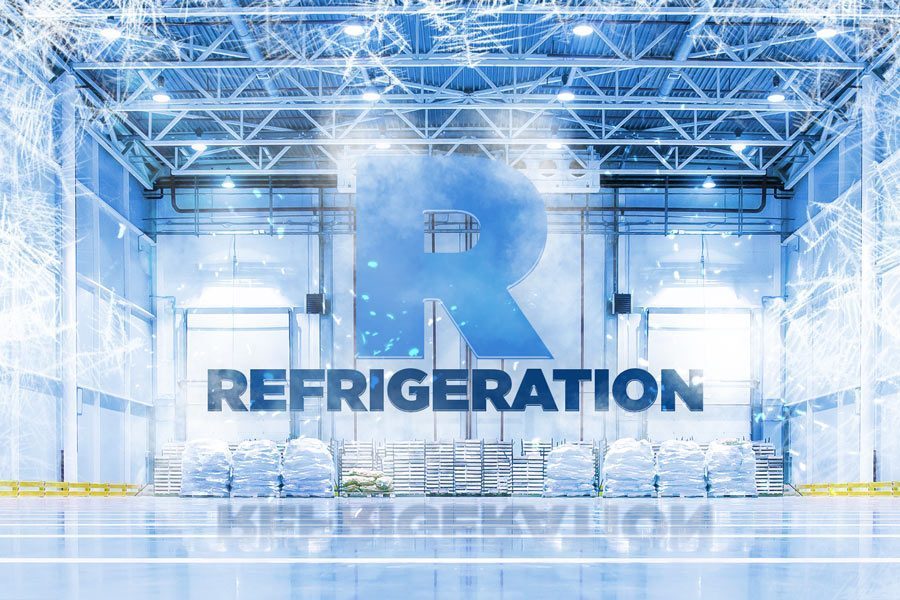Hydrogen From A to Z: R for Refrigeration
By: GenH2 Staff
Read Time: 3 minutes
Defining the Hydrogen Economy from A to Z: R is for Refrigeration
3 MINUTES READ
Continuing in our defining the Hydrogen economy from A to Z series, we are focusing on the word Refrigeration.
Refrigeration is one of the most influential advancements in human history. The ability to preserve food was a luxury seen by few. Now, refrigeration is not only about generating ice but has expanded to become an integral part of modern society: from preservation and cold storage to air conditioning and cooling.
Refrigeration is all about cooling a heat load with a thermodynamic process. This essentially means bringing your isolated coolant through a process of compression and expansion so that heat is removed from the surroundings. The first ever active refrigeration system was demonstrated by William Cullen, who used diethyl ether inside of a vacuum chamber. This caused the liquid to rapidly adsorb heat from the environment, thus cooling and forming ice on the chamber. Although we have many complex refrigeration systems today, most of which do not use a vacuum, the thermodynamics of utilizing the behavior of fluids when removed from their saturated states still holds key in every active refrigeration process.
Below is an excerpt from our liquefaction blog, as liquefaction is an open cycle refrigeration system. The Brayton cycle process by GenH2 for our 1TPD system is directly tied to the refrigeration system for our controlled storage tanks with zero boiloff.
“Liquefaction is a lot like refrigeration, except it happens in an open system. This means that you add a gas, and capture and store the liquid externally. Thermodynamically, a refrigeration cycle and a liquefaction cycle are the same. Some of the popular fluids only become liquid at cryogenic temperatures, and so we use these refrigeration cycles to liquefy these gases. Oxygen, Nitrogen, Hydrogen and Helium only become liquid at 90, 77, 20 and 4 Kelvin respectively.
Refrigeration systems have an associated efficiency, which we compare to the theoretical ideal refrigeration cycle: the Carnot Cycle. The Carnot cycle was named after French engineer Carnot who described the ideal cycle being that the work done on the system, for example by the compressor, should be the heat removed by the system. Naturally, this is impossible to achieve in a real system, especially at low temperatures. However, the efficiency of refrigeration systems is usually measured by the Carnot or the coefficient of performance (COP).
Any liquefaction process involves compressing and expanding the gas. By compressing the gas and rejecting the heat that results from that step, you can then expand the gas (in a thermally isolated environment) to reduce the temperature and liquefy the gas; this is either done by the high pressure gas expanding through a valve (isenthalpic expansion) or through a work-producing expander (isentropic expansion). The heat exchangers used in a refrigeration cycle tend to define the type of thermodynamic cycle. There are two main types of heat exchangers, Recuperative and Regenerative. Recuperative cycles include Brayton (like in GenH2’s 1TPD system product), Claude, and Joule-Thompson. Regenerative cycles include Gifford-McMahon, Stirling and Vuilleumier.
In real large-scale systems, the distinction is not so cut and dry, refrigeration cycles can use a combination of turbos expanders and JT valves, and even multiple fluids in a cascade system. Hybrid systems use the JT valve at the last step (coldest step) for expansion while using turbo expanders elsewhere in the cycle. The type of liquefaction cycle used is determined by the production rate required. Lab scale liquid hydrogen production could use the Linde-Hampson system with Liquid nitrogen precool, or cryocooler based approach. Small to medium Production Scale could use Brayton or Claude cycles, with or without liquid nitrogen precool. Large-scale production is usually by a Claude cycle approach. At GenH2, we believe our best area of focus would be the lab scale to small and Medium Scale production.”
Blog written by GenH2 team member: Julien Thomas



